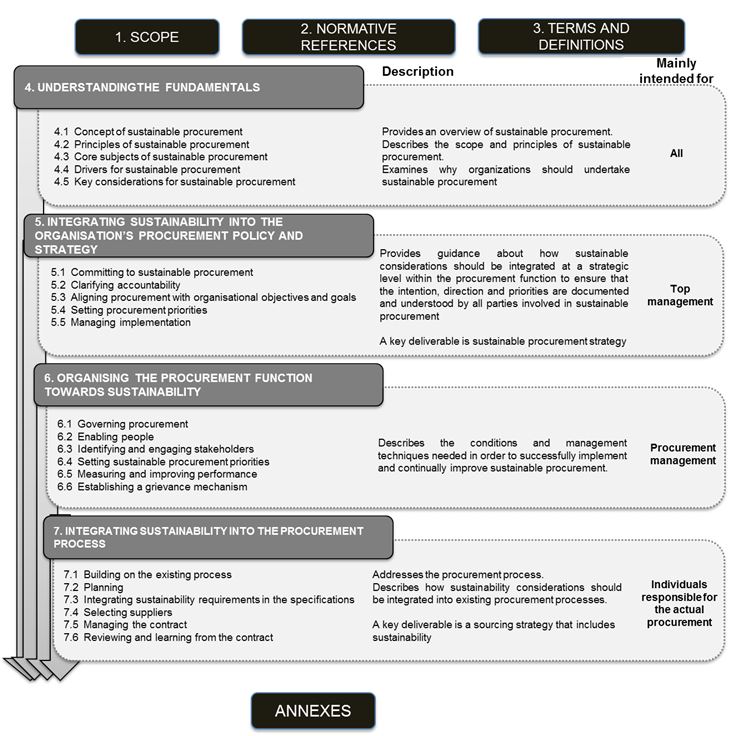Some thoughts on the ISO20400 Sustainable Procurement Standard

ISO20400 overview
I’ve been busy this week reviewing the new(-ish) ISO20400 Sustainable Procurement Standard on behalf of a client. At first I thought it was a mess – an impenetrable thicket of requirements with lots of repetition. But then the penny dropped. What we have here is the first standard (albeit a guidance-only standard) that I have seen that actually sets out how to cascade requirements from the senior management/strategic level (clause 5) down to the coal face where things happen (clause 7), taking in middle management en route (clause 6). And that’s pretty brilliant.
I blame a mixture of my increasingly inflexible brain and the clinical ISO-style text for this confusion, but when it clicked, the whole thing made wonderful sense. The apparent repetition comes from the requirement for each of three levels of the organisation to follow the classic Plan-Do-Check-Act continual improvement cycle at their level of accountability. This is, of course, how all Sustainability programmes should work, cascading down through the existing reporting structure (ISO14001 was often a bolt-on to corporate structures in practice, limiting its effectiveness).
What I would say is we need to be mindful of what ISO20400 isn’t, and can never be. To build a truly sustainable supply chain, you need to revisit your corporate philosophy, your business model and your product/service design as the really important decisions are made at these levels (consciously or otherwise) and ISO20400 can’t be expected to cover all that. For example, when Interface decided that the best raw material for new carpet was old carpet (rather than fossil fuel derived materials), implementing this required a complete rethink of how to make and sell carpets.
There’s plenty of other good stuff in the standard, and some thinks I would quibble with (inevitably), but it is worth a look!

